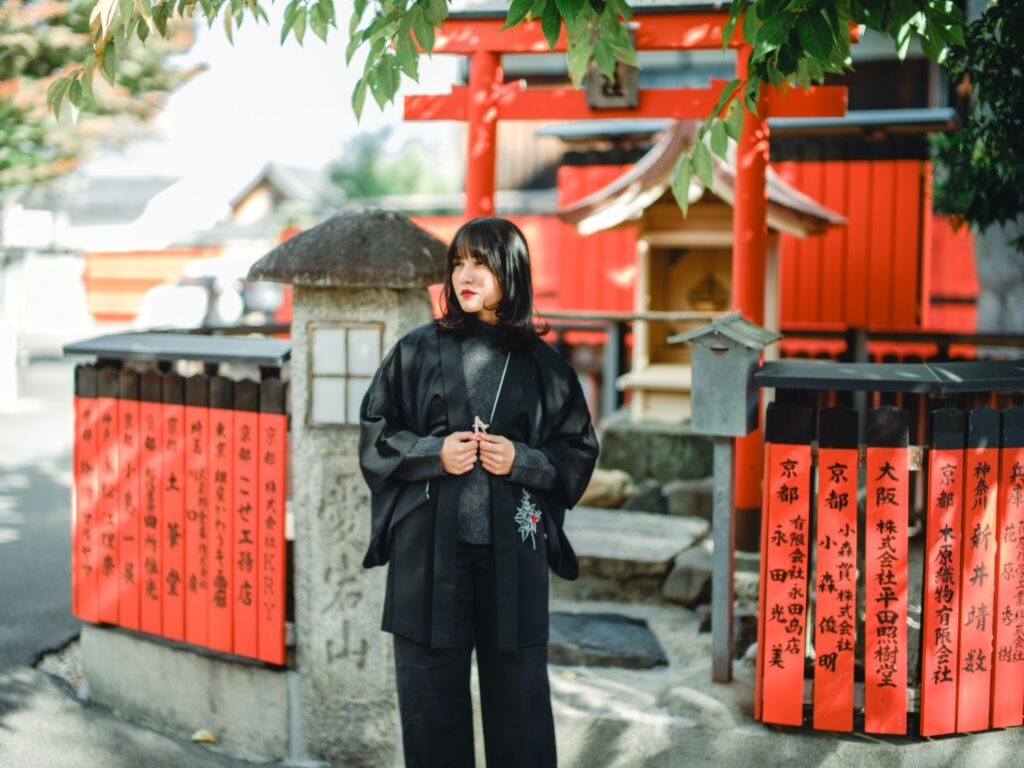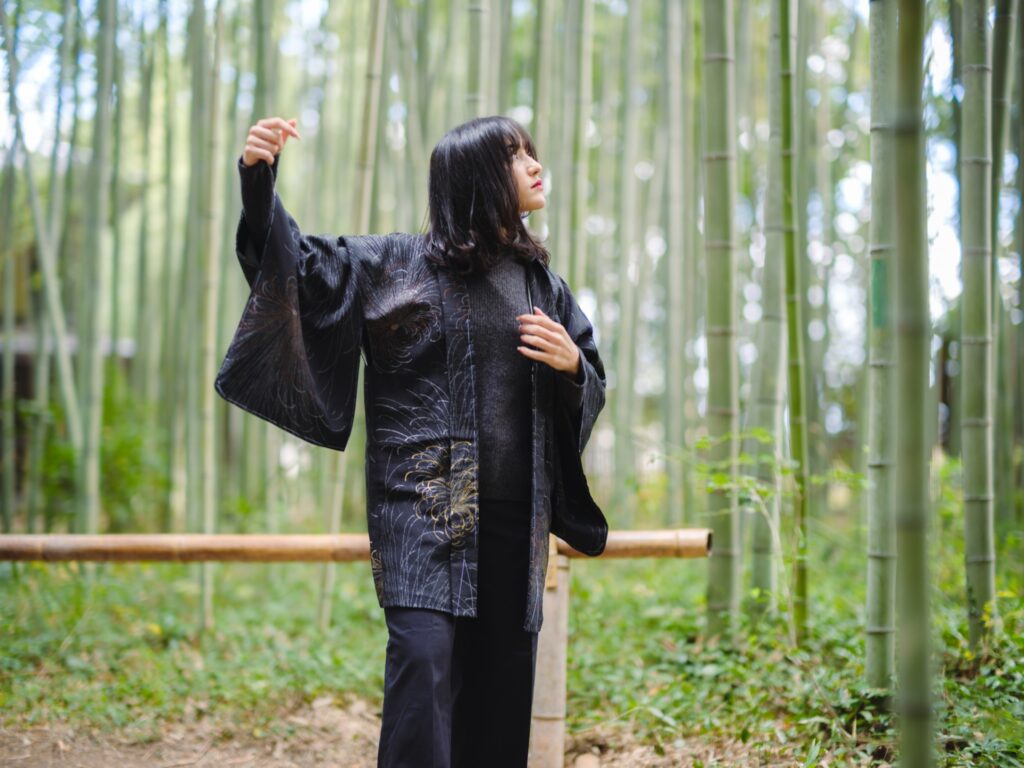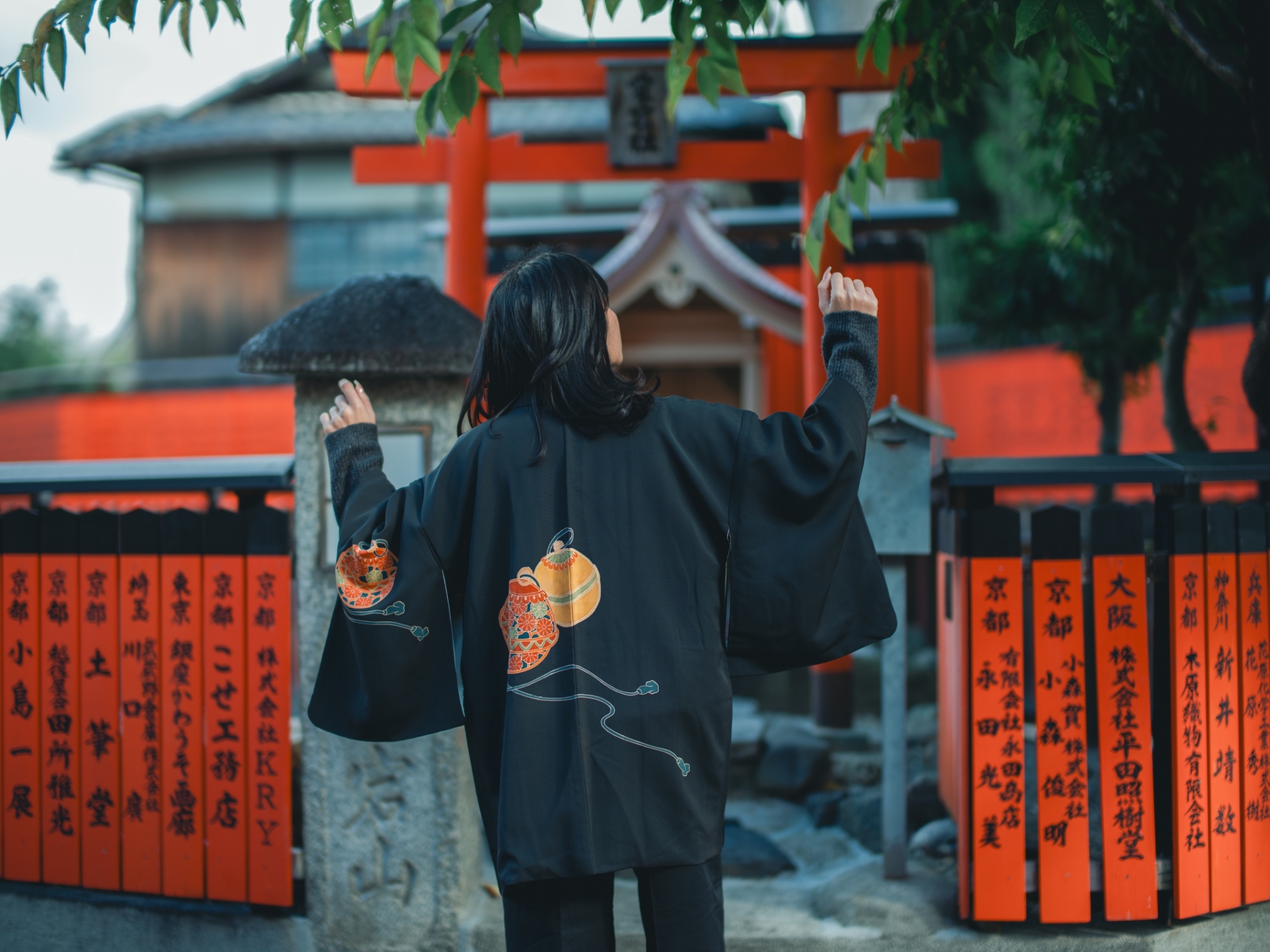From Tradition to Timeless Style —
Explore the legacy of Japanese vintage haori and kimono through a journey that starts in ancient Japan, flows through their cultural symbolism, and ends with their relevance and charm in modern European fashion.
⸻
1. The Cultural Legacy of the Japanese Vintage Kimono

1.1. From Samurai to Silk: Origins of the Japanese Kimono
The Japanese kimono was born from centuries of tradition, deeply rooted in samurai culture and courtly life.
Originally worn by aristocrats and warriors, the kimono evolved over time into an elegant and symbolic garment for all classes. Each color, pattern, and layer told a story—expressing status, season, and personal identity.
1.2. The Meaning Behind the Fabric: Symbolism and Seasons
More than clothing, the Japanese kimono is a form of cultural storytelling.
From cranes representing long life to cherry blossoms symbolizing fleeting beauty, every motif on a kimono connects the wearer to nature and tradition. These meanings add depth and emotion to each vintage piece.
1.3. The Art of Craftsmanship: Handmade Elegance
Each Japanese vintage kimono is a masterpiece of hand-dyed silk and intricate techniques.
Whether created with shibori (tie-dye), yuzen (hand painting), or kasuri (ikat weaving), the process takes months. These techniques have been passed down by generations of artisans who treat the kimono as art, not fashion.
⸻
2. The Hidden Gem of Japanese Vintage Style

2.1. What Is a Haori? Origins and Purpose
The haori is a short kimono jacket once worn by samurai over their armor—today, a fashion-forward piece with a rich story.
Unlike the formal kimono, a Japanese vintage haori was worn more casually, especially by men. Over time, it became a statement of personal style and inner elegance.
2.2. Haori Patterns and Meanings: Quiet Sophistication
While often more subtle than full kimonos, haori feature sophisticated linings and family crests.
Japanese vintage haori jackets express refined taste. Many designs are hidden inside—intended to reveal beauty to only those closest to the wearer, adding a layer of intimacy to the garment.
2.3. From Kyoto to Berlin: Haori in Modern European Fashion
Today, the Japanese vintage haori is crossing continents, worn in Berlin, Milan, and Warsaw as a cultural and fashion statement.
Haori jackets pair effortlessly with jeans, dresses, or tailored trousers. This fusion of tradition and contemporary style speaks to a growing movement of slow, sustainable, and meaningful fashion.
⸻
3. Embracing Japanese Vintage in a European Wardrobe

3.1. Why Vintage? Sustainability and Soul
Wearing a Japanese vintage kimono or haori is not just a fashion choice—it’s a philosophy.
Unlike fast fashion, these pieces have stories and soul. Choosing vintage supports sustainability, preserves history, and connects you with something far deeper than trends.
3.2. How to Wear Haori and Kimono Today
From casual streetwear to elegant layering, you don’t need to be in Japan to wear it right.
Pair your vintage haori over a T-shirt and trousers, or drape a kimono over a long dress. Genderless and versatile, these garments bring balance, grace, and individuality into any wardrobe.
3.3. Where to Find Authentic Vintage Pieces
The best Japanese vintage haori and kimono come from curated sources in Kyoto and Tokyo—but they’re reaching Europe.
Today, trusted online stores and select boutiques in cities like Berlin, Milan, and Kraków are making authentic vintage garments accessible. Look for genuine craftsmanship and cultural integrity.
⸻
Conclusion

In a world of fast fashion and fleeting trends, the Japanese vintage kimono and haori offer something lasting—an invitation into a centuries-old tradition of elegance, mindfulness, and meaning. From their roots in samurai society to their place on today’s European streets, these garments embody a quiet power. They speak not just of Japan, but of a universal desire to dress with soul, with story, and with purpose.
Whether you wear a vintage haori casually over jeans in Berlin, or style a kimono for a cultural gathering in Milan or Kraków, you are joining a global movement of thoughtful fashion. You are choosing to wear heritage. And in doing so, you help keep this living art alive—not only for yourself but for future generations.


コメント